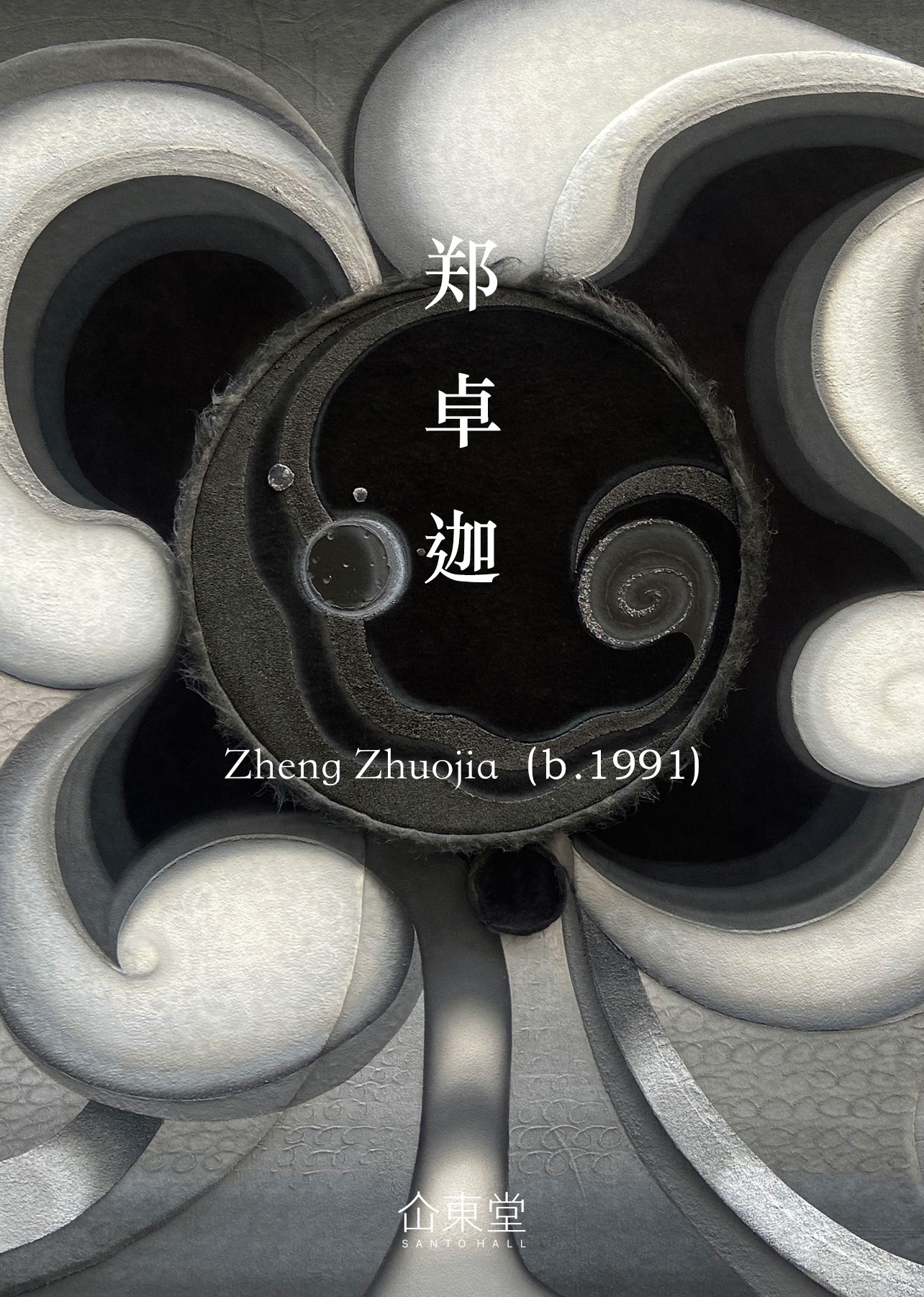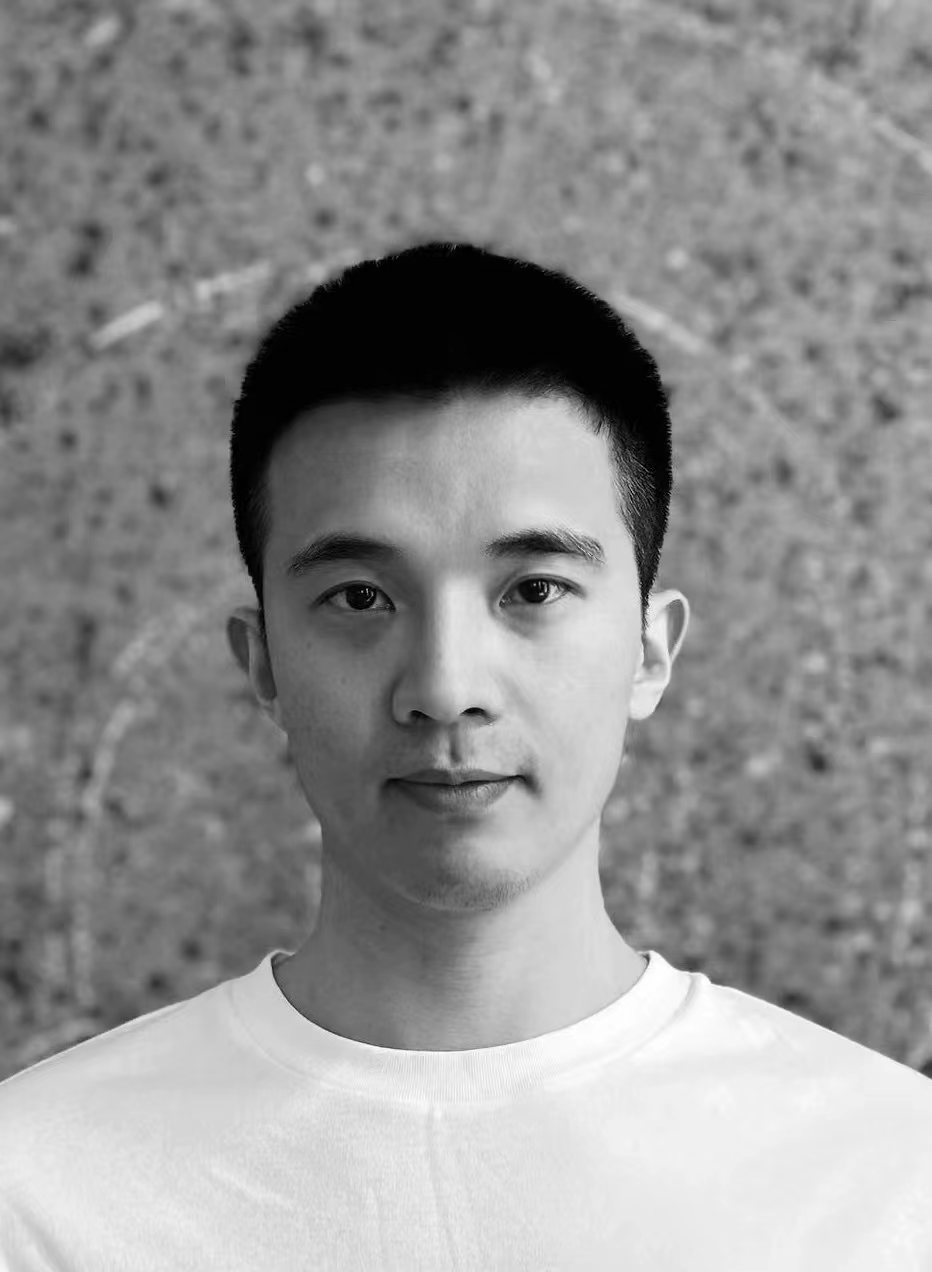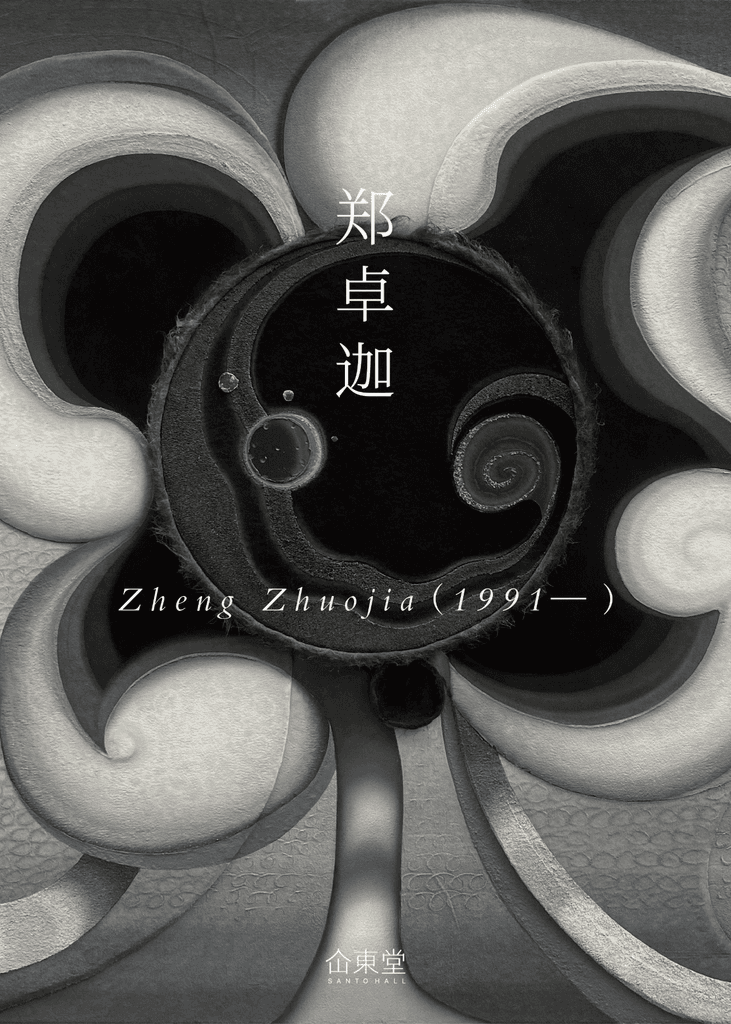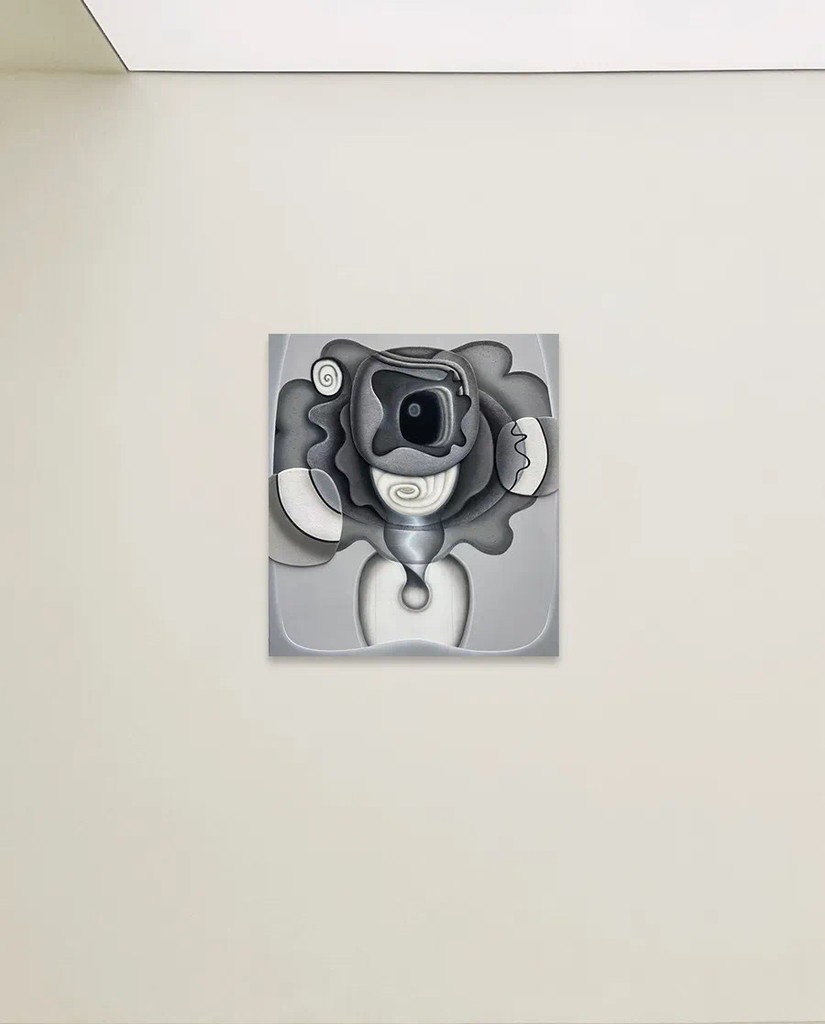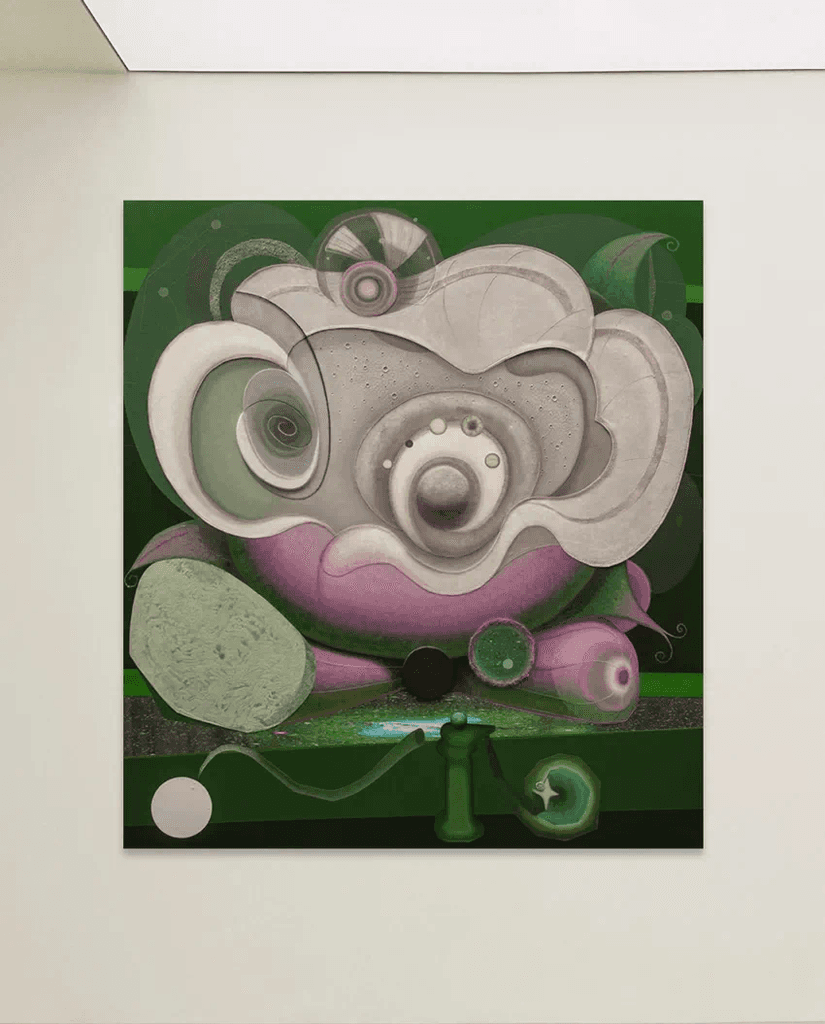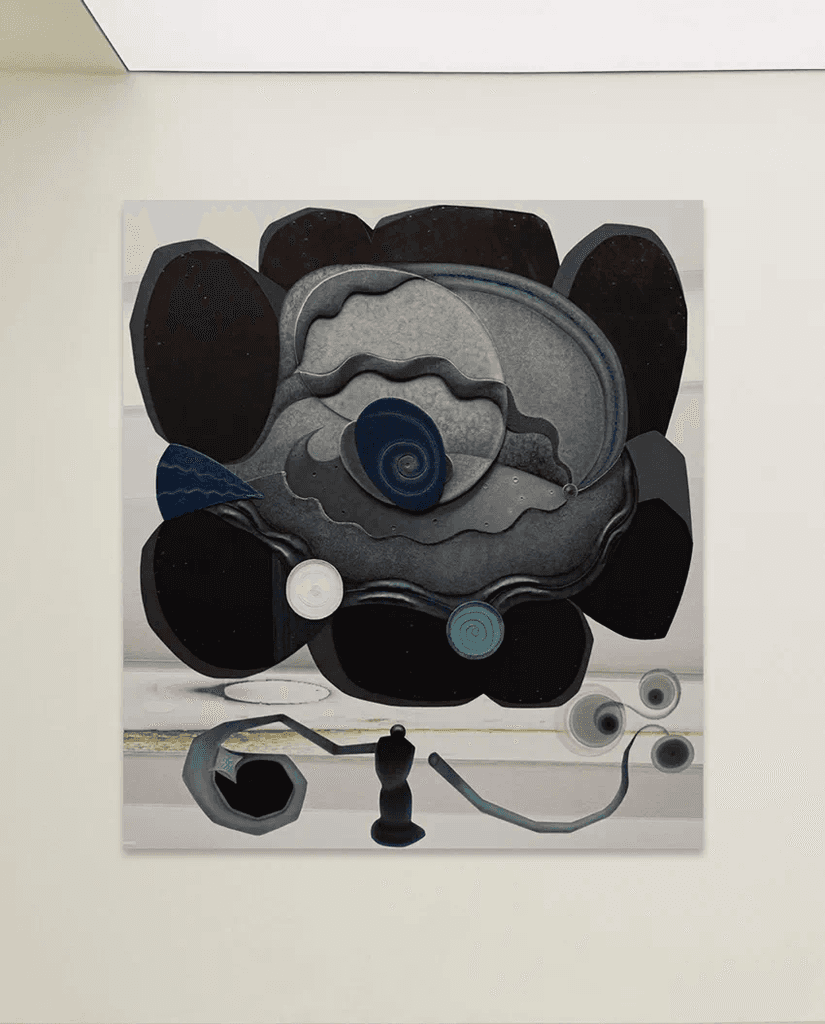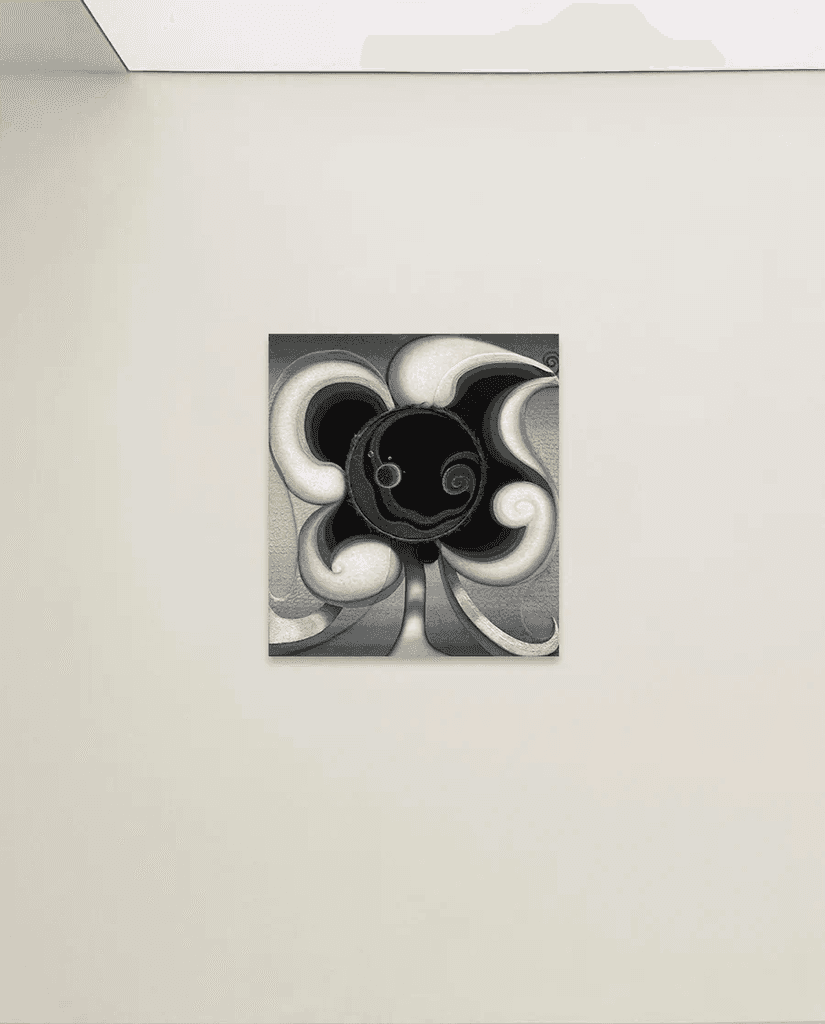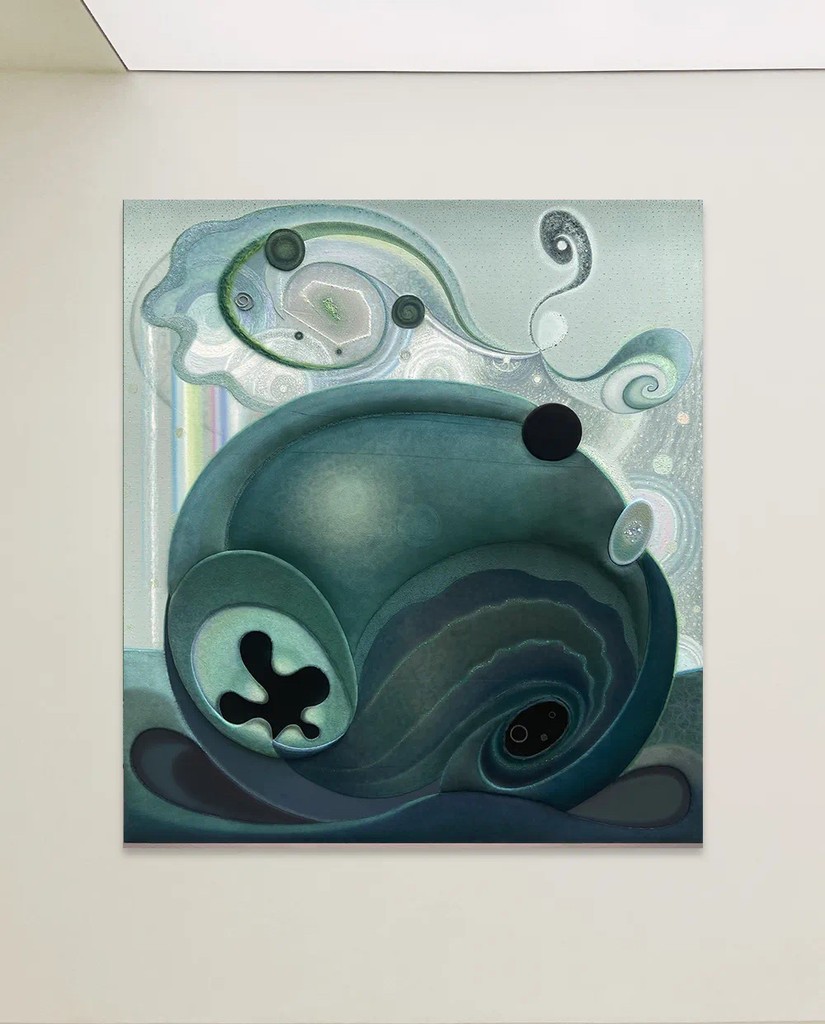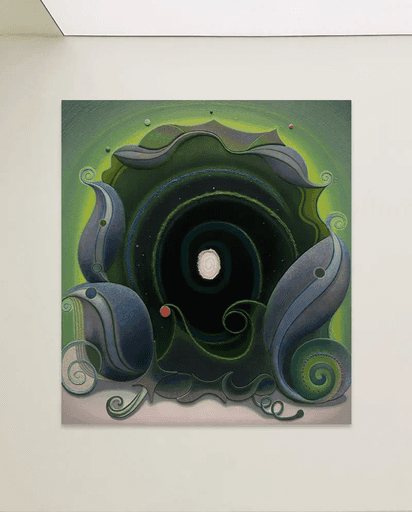隐德莱希 Entelecheia
Zheng Zhuojia's art is a construction of an ecosystem, and thus approaches a true realism. His work takes the form of easel painting and uses a rich variety of materials as the medium. He mixes mineral pigment powder with acrylic and oil pigments, under the artist’s hands, through spraying and smear, deliver a distinct visual texture on the composite material, which leaves a deep impression to the viewer. This texture of multi-features is present in every piece of Zheng Zhuojia's work with the form of plants. However, the image of plants is but a trivia, and the visual texture is only a means, both of which are but the mysterious facades of the mirage that he carefully created. In fact, Zheng Zhuojia's art contains enormous complexity under the phenomena displayed in his works, which includes his comprehensive variations on a number of existing yet fettered concepts.
Among these variations, Zheng Zhuojia's redefinition of the concept of ecosystem might be the most significant one. In his book Process and Reality (1929), Alfred North Whitehead argued that the world is not a system composed of the individual operations of countless isolated individuals from the perspective of mechanical materialism; rather, all individuals grasp each other and become each other through the process of their operations. Whitehead addresses that, since the existence of things affects the trajectory of each other's development, nothing should be regarded as a partial, independent being. It is on the sense of Whitehead’s point of view, the ecological system defined by Zheng Zhuojia is a complex Mobius strip. He believes that ecology, as a territorial force, has always infiltrated into the essence of things included in, so there is no critical distinction between life and matter. As he said: "If a seed of a plant is recognized as a matter when placed in a cabinet, and a life when buried in moist soil, then the difference between matter and life is only a change of context. And if I put this seed into my work, then in the context of the so-called art, it produces different meaning as whatever we believe so, and this production has no effect on its own quality ”.
In Zheng Zhuojia's ecosystem, everything he deployed has the attributes of life in its essence, regardless it is an organic or inorganic matter in the common sense. The co-construction and mutual influence between them constitute an ecology, which has nothing to do with the artistic context, the signifier-signified cultural system in, nor the subjectivity of the viewer. This ecology is an organism in its existential sense. From this, we can see that Zheng Zhuojia's ecosystem is an organism composed of life (including life and matter under the common sense). This organism is similar to the one in artist Anika Yi's works, but with broader boundaries.
In Tarkovsky's film Solaris (1972), in a space station orbiting the planet Solaris, the astronauts undergo dramatic changes just by observing the planet, as their cognitive systems had been completely destroyed and reconstructed. In Zheng Zhuojia's view, this kind of change is not only the process of the organism grasping each other, but the process that vitality revealed and consummated itself. There was an infiltration between the astronauts and the planet Solaris, through the means of observation, and the infiltration triggered the unfoldment of a process. In the end, only the degree of real of this process matters, as both the astronauts and the Solaris dissolve themselves to feed to the unfoldment of this process. Zheng Zhuojia's emphasis on this film of Tarkovsky provides a new point of view to understand his works - the organism he constructed is just like the Solaris planet in the film, and the viewer’s watching is a process in which both parties grasp and infiltrate each other, which, he calls a construction process. In this very process, Whiteheadian sense of life flourishes and sprouts with vitality.
Upon the pretext of ecosystem consisting of ubiquitous vitality, the term creativity, in Zheng Zhuojia's conceptual mechanism, is the natural growth of imagination in a self-consistent ecosystem in the process of constantly approaching perfect harmony. Imagination is not an idea illusory in consciousness, rather, it is an entity that exists at the microscopic or quantum physical sense. Every material mobilized by the artist is a huge-microscopic world, and the state of this world itself is self-consistent. Partial self-consistency forms the overall self-consistency of the picture through the artist's grasp of harmony, and the picture formed in this process is, in his view, "a mechanism in the process of ecological materialization". In other words, the establishment of the entire ecosystem is not aimed at creating a picture, and the final picture is just a redundant by-product of the entire process. Zheng Zhuojia's grasp of overall harmony is a delicate and rational constructive progression based on a sense of balance - which is reminiscent of Alexander Calder's kinetic sculpture - all parts are suspended under a delicate balance of dynamics.
From a certain point of view, the works of Zheng Zhuojia's construction are not works of art under the definition of social common sense. As he claims, he is not providing a new aesthetic pattern, and his working method is also out of the conventional sense of easel painting and pure visual experiences. Zheng Zhuojia's works strive to eradicate the marks of human touch left on the work, and the purpose is to reveal the natural quality of each organism that composes the whole. His work is to demonstrate a real state of life by restoring the organism to its original state - this state can be understood as "desire" in Deleuzian sense, that is, the force that unifies the differences between the internal organs of the body, the result is the Body-without-Organ, for in all parts there is evidence of the existence of another parts, thus avoiding the personification and subjectivation of will, ego, and unconsciousness.
Aristotle once used the term entelecheia (ἐντελέχεια) to describe a state in which beings’ hidden potentials gradually reveal themselves, until completely reach aletheia (ἀλήθεια). Sachs explains this term of entelecheia (ἐντελέχεια) as "being-at-work-staying-the-same". In Zheng Zhuojia's view, what his work is about is the exploration and practice of entelecheia. Intrigued by the introduction of this term, Zheng Zhuojia’s works spontaneously leave a sense of visual freshness and allusiveness, as well as his usual use images of plants as well as comprehensive materials - all the phenomena displayed in these works are staying in a paradoxical disclosure-enclosure state as in Heideggerian sense of aletheia. The paradoxical gesture presents an organic, exuberant state of reality in the process of self-construction. This state of exuberance is different from Bergsonian Élan vital and early animism, rather, the world Zheng Zhuojia presents via art is the world from the perspective of process naturalism in the Whiteheadian sense. It is a world in which the boundary between objects, and the boundary between viewers and works, has been dissolved in their encounters.

